The Partimento Method
Course
The freedom of Composing Music simply by Combining Musical Elements!
You just need to study each element, and a bit of creativity to combine them.
This is a short piece written using The Partimento Method
Course Contents
Chapter 1: Music Theory you need to learn Partimento FREE
Embark on the adventure fully equipped!
Pack your bags with all the elements of music theory you’ll need to navigate every stage of this journey and maintain a solid direction!
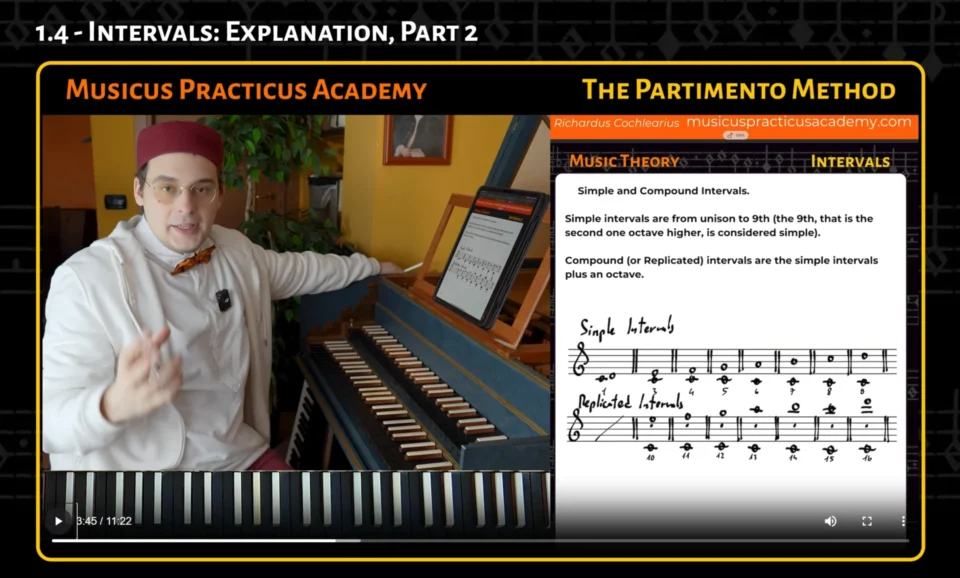
What you will Learn
🎼 Stage 1.0 – Introduction
🎼 Stage 1.1 – Major and Minor Keys
🎼 Stage 1.2 – The Circle of Fifths
🎼 Stage 1.3 – Scales
🎼 Stage 1.4 – Intervals
🎼 Stage 1.5 – Tactus and Meter
🎼 Stage 1.6 – Unprepared Dissonances
🎼 Stage 1.7 – Movement of the Voices
🎼 Stage 1.8 – Transposition
🎼 Stage 1.9 – Fa Mi & Mi Fa
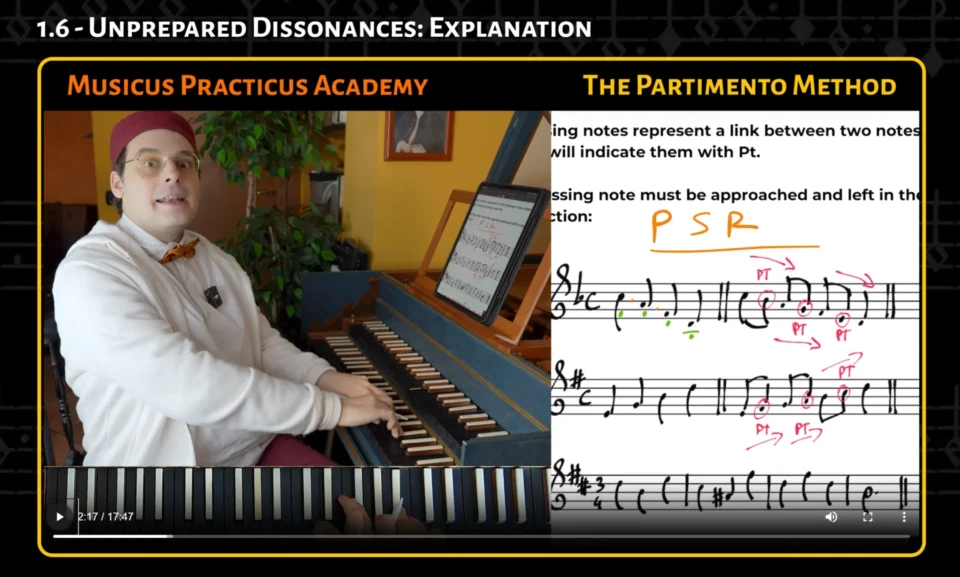
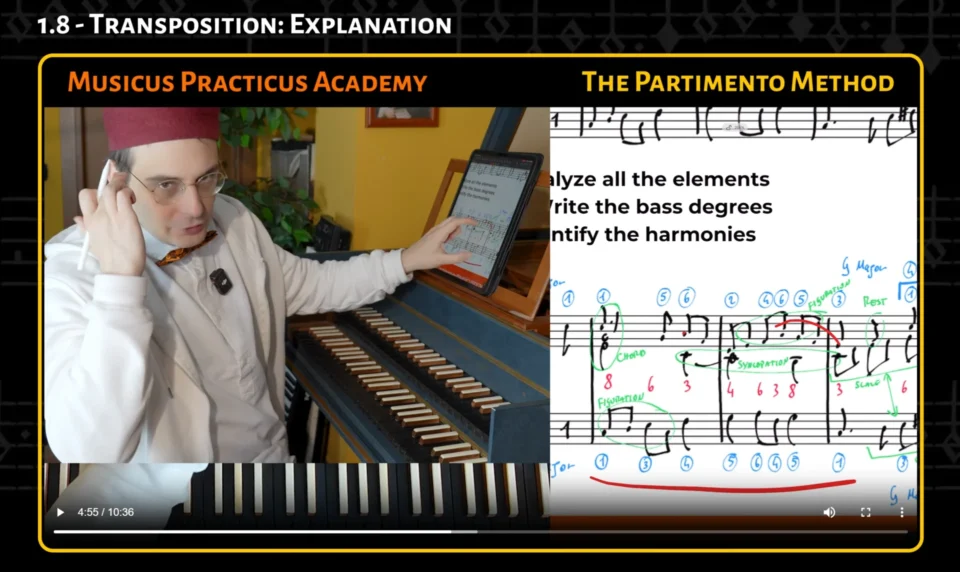
Chapter 2: 2 Part Partimento FREE
Learn to compose two-voice counterpoint!
Explore the world of consonances and dissonances, how to combine them, and how to create new pieces using simple patterns!
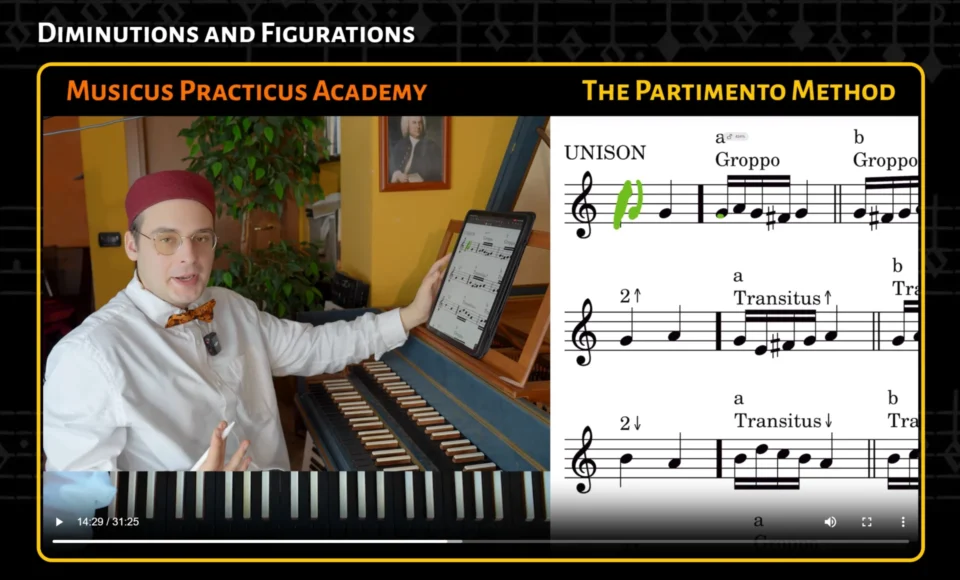
What you will Learn
🎼 Stage 2.1 – Parallel 3rds and 6ths
🎼 Stage 2.2 – Alternating 3rds and 6ths
🎼 Stage 2.3 – 3rd Down 2nd Up
🎼 Stage 2.4 – 7-6 Suspension Chain
🎼 Stage 2.5 – 2-3 Suspension Chain
🎼 Stage 2.6 – 7-3 Suspension Chain
🎼 Stage 2.7 – 2-6 Suspension Chain
🎼 Stage 2.8 – 7-3 + 2-6 Sequence
🎼 Stage 2.9 – 2-Part Cadence
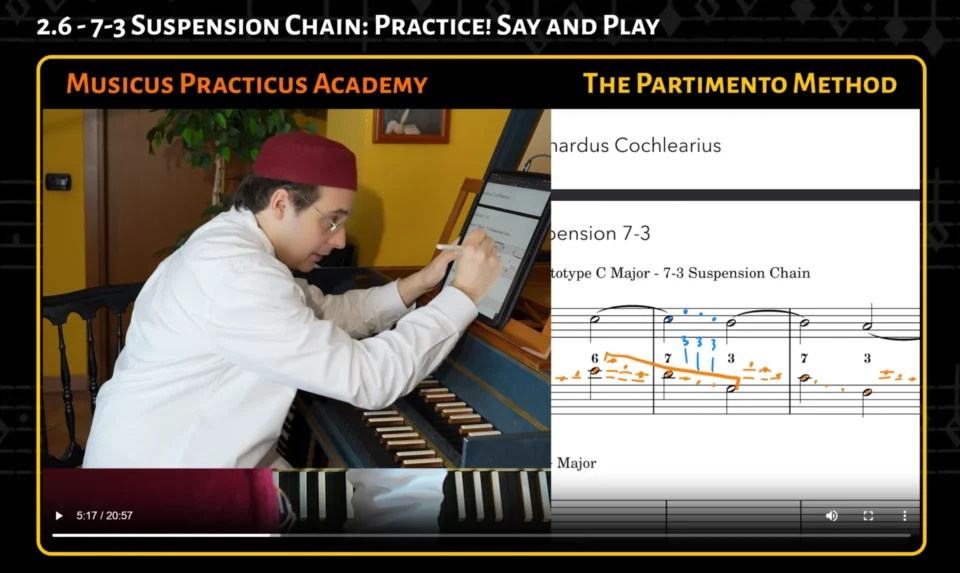

Chapter 3: 3 Part Partimento
Continue the adventure!
Add a third voice and make your compositions even more engaging!
Learn to use the Tied Bass, the Quintfall, and 7-6 Fauxbourdon: Patterns that will always be useful and effective in every composition!
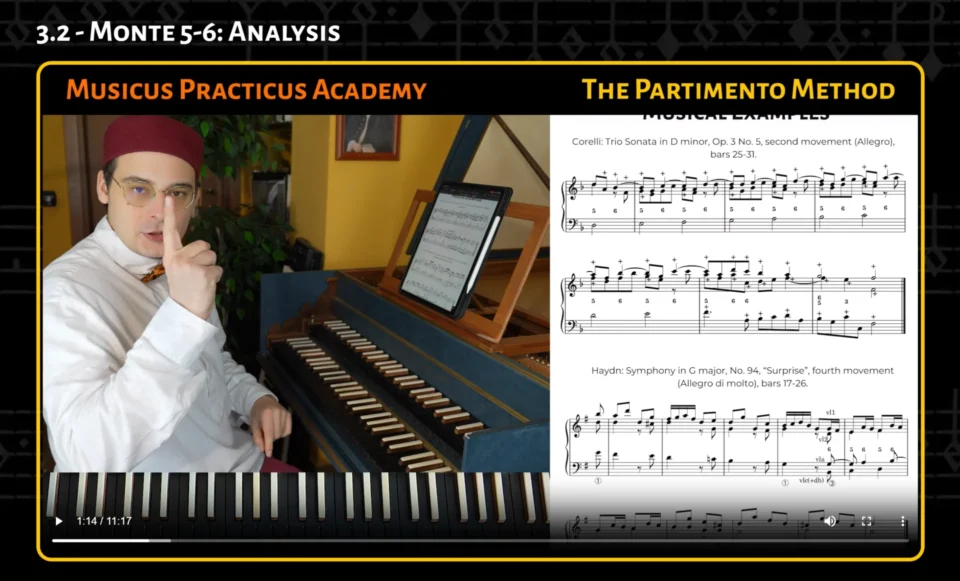
What you will Learn
🎼 Stage 3.1 – Fauxbourdon
🎼 Stage 3.2 – Monte 5-6
🎼 Stage 3.3 – 7-6 Fauxbourdon
🎼 Stage 3.4 – 5th Down 4th Up
🎼 Stage 3.5 – Tied Bass
🎼 Stage 3.6 – Stepwise Romanesca
🎼 Stage 3.7 – 3-Part 3rd Down 2nd Up
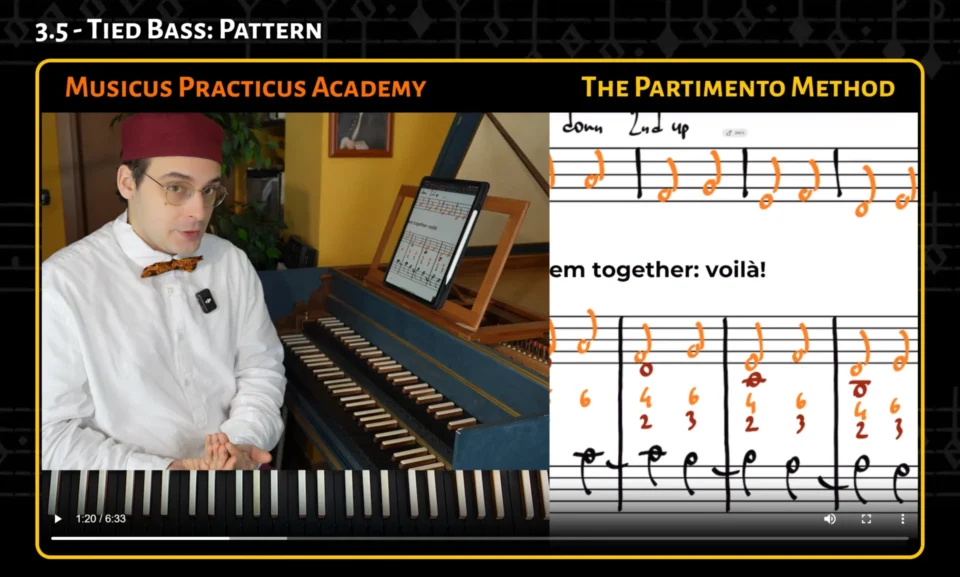
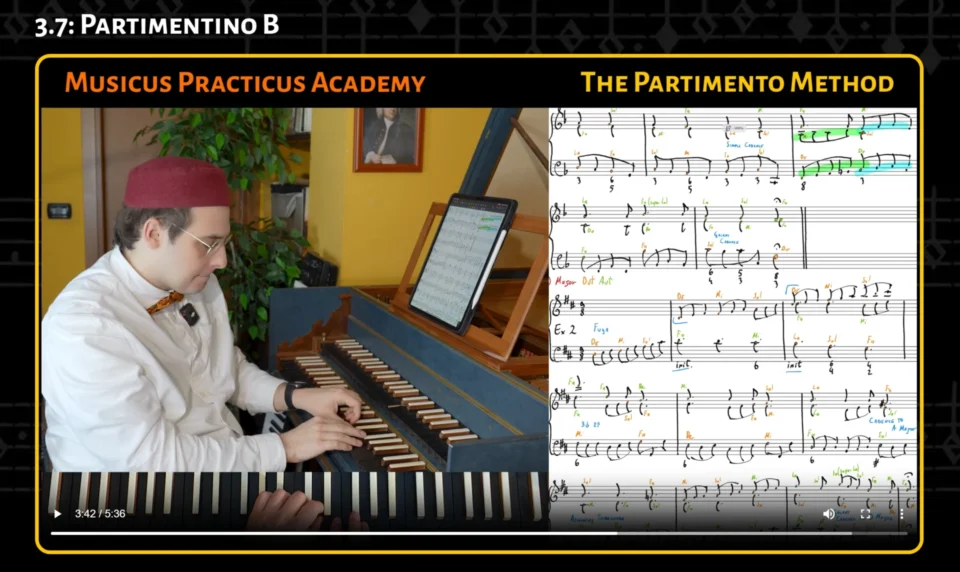
Chapter 4: 3 Part Cadences
Sometimes it’s necessary to pause at a checkpoint to catch your breath and recharge!
Learn to use cadences to conclude your musical phrases and restart with more vigor!
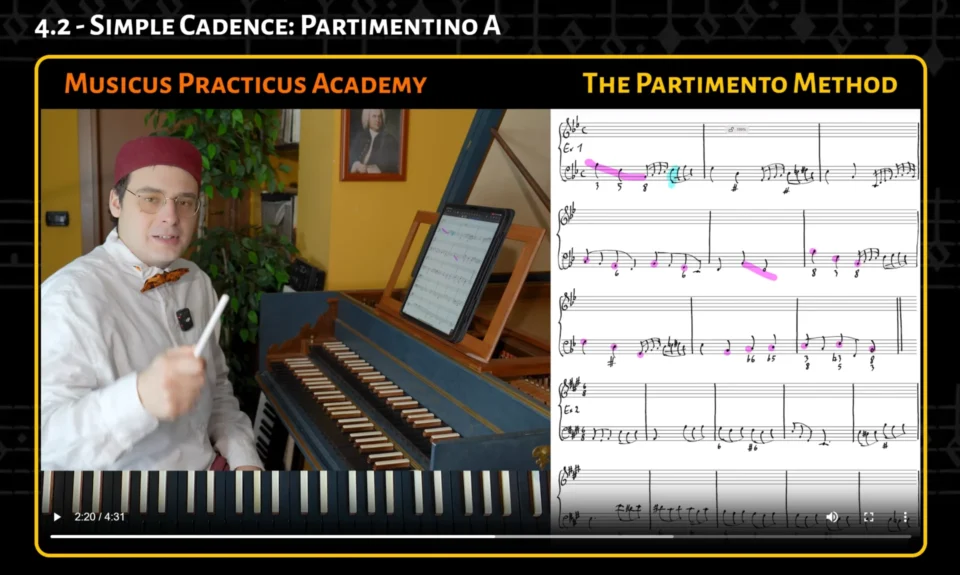
What you will Learn
🎼 Stage 4.1 – 3-Part Cadences
🎼 Stage 4.2 – Simple Cadence
🎼 Stage 4.3 – Compound Cadence
🎼 Stage 4.4 – Double Cadence
🎼 Stage 4.5 – Galant Cadence
🎼 Stage 4.6 – Neapolitan Cadence

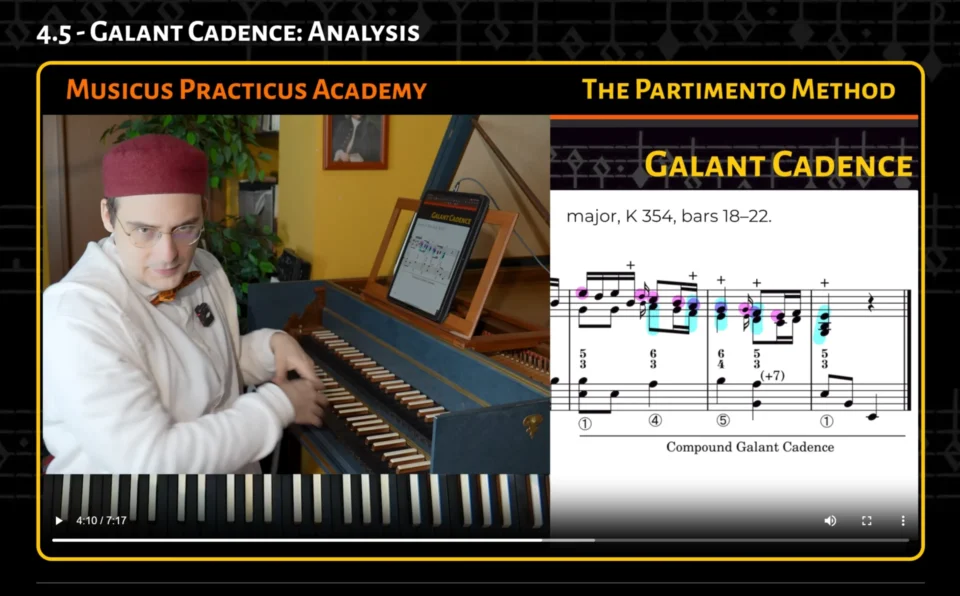
Chapter 5: Scalar Movements
In every journey, there are ups and downs!
Learn to harmonize scales in all 24 keys ascending and descending.
Acquire the ability to move freely on the keyboard!
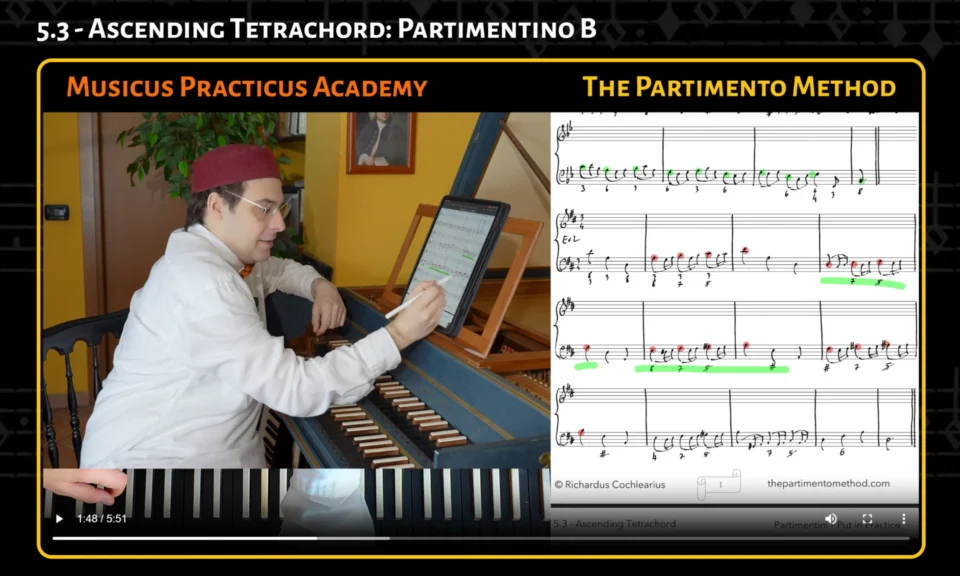
What you will Learn
🎼 Stage 5.1 – Scalar Movements
🎼 Stage 5.2 – Ascending Pentachord
🎼 Stage 5.3 – Ascending Tetrachord
🎼 Stage 5.4 – Ascending Scale according to Durante
🎼 Stage 5.5 – Descending Tetrachord
🎼 Stage 5.6 – Descending Pentachord
🎼 Stage 5.7 – Descending Scale according to Durante
🎼 Stage 5.8 – 3 Part Rule of the Octave according to Durante
🎼 Stage 5.9 – 4 Part Rule of the Octave according to Fenaroli


Chapter 6: Galant Schemata
Behind every journey, there’s always a mind that has mapped it out!
How did composers of the 18th century think about music?
What mental frameworks did they use?
What musical strategies and patterns characterize their compositions?
In this extensive level, you will learn to utilize all the Galant Schemata, mental models that allowed composers of the 17th, 18th, and 19th centuries to compose a great deal of music quickly!
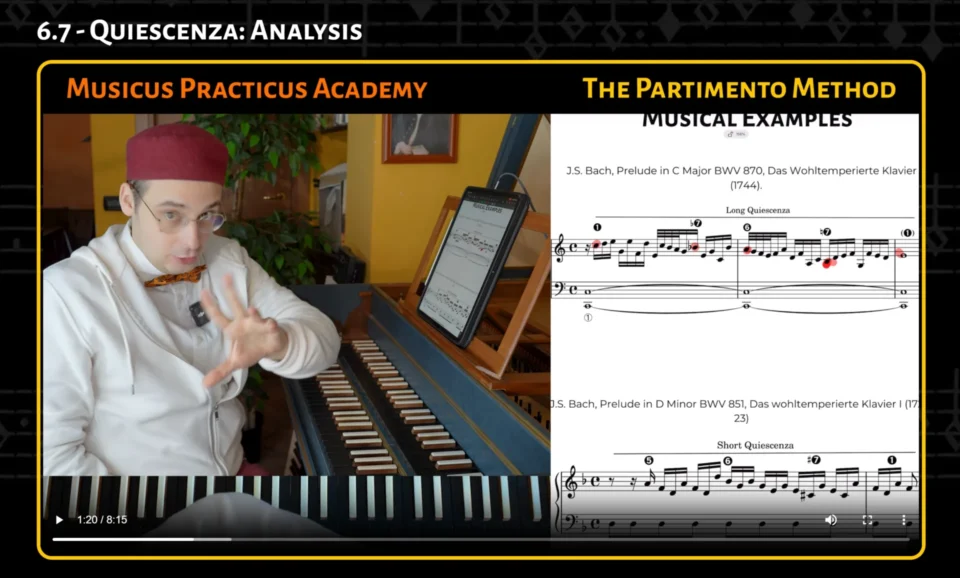
What you will Learn
🎼 Stage 6.1 – Galant Schemata
🎼 Stage 6.2 – Leaping Romanesca
🎼 Stage 6.3 – Stepwise Romanesca
🎼 Stage 6.4 – Galant Romanesca
🎼 Stage 6.5 – Prinner
🎼 Stage 6.6 – Do Re Mi
🎼 Stage 6.7 – Quiescenza
🎼 Stage 6.8 – Meyer, Jupiter, Pastorella, andAprile
🎼 Stage 6.9 – Fonte
🎼 Stage 6.10 – Monte
🎼 Stage 6.11 – Monte Romanesca
🎼 Stage 6.12 – Ponte
🎼 Stage 6.13 – Fenaroli
🎼 Stage 6.14 – Sol Fa Mi
🎼 Stage 6.15 – Indugio
🎼 Stage 6.16 – Folia
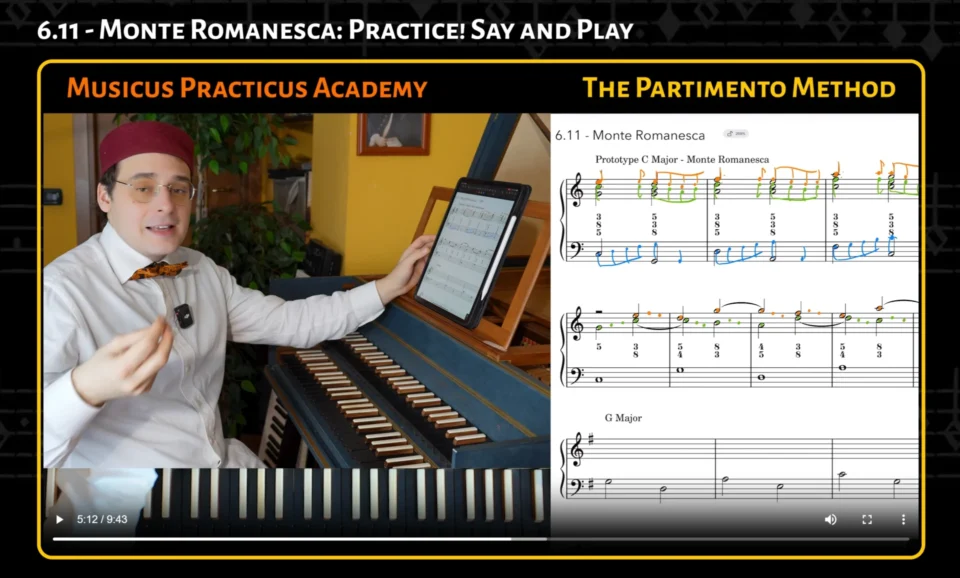
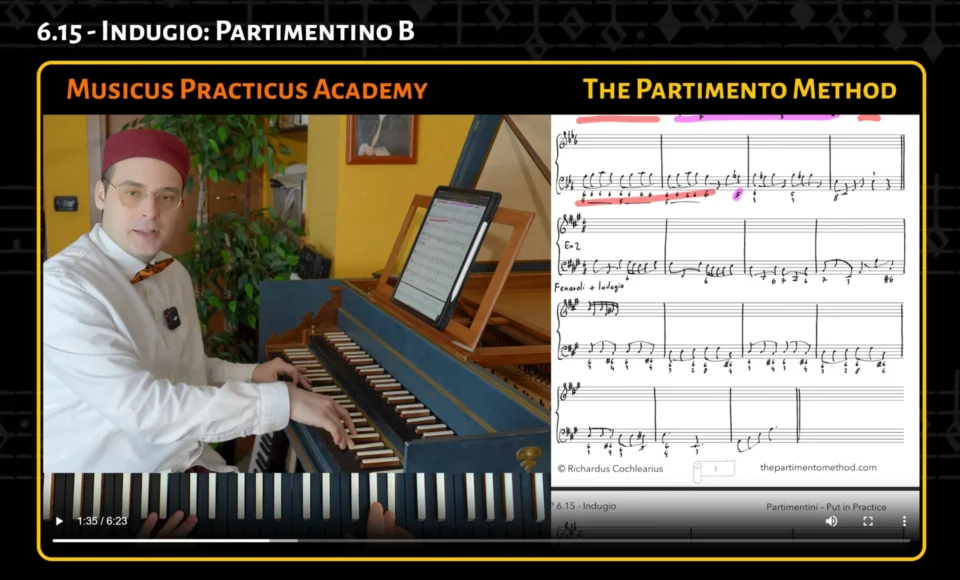
Chapter 7: Advanced Cadences
Different sized steps can mark your journey in different ways!
Learn to use different types of cadences, based on the bass movement, and learn to use them correctly in your work.
Each type of cadence has its own weight and particular strength!
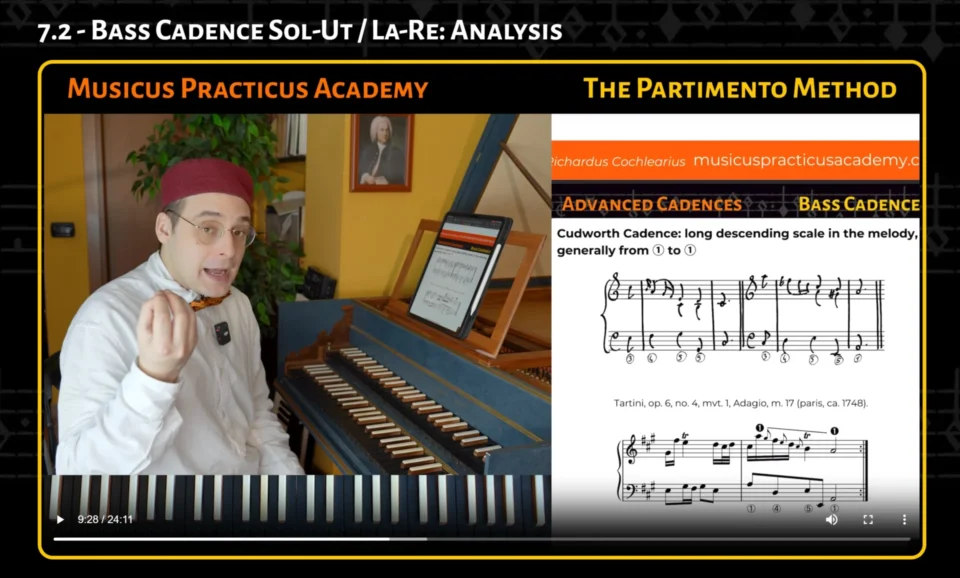
What you will Learn
🎼 Stage 7.1 – 4-Part Cadences
🎼 Stage 7.2 – Bass Cadence Sol-Ut / La-Re
🎼 Stage 7.3 – Cantus Cadence Mi-Fa / Sol-La
🎼 Stage 7.4 – Tenor Cadence Re-Ut / Mi-Re /Fa-La
🎼 Stage 7.5 – Altus Cadence Sol(Fa) Mi /La(Sol) – Fa
🎼 Stage 7.6 – Other Cadences
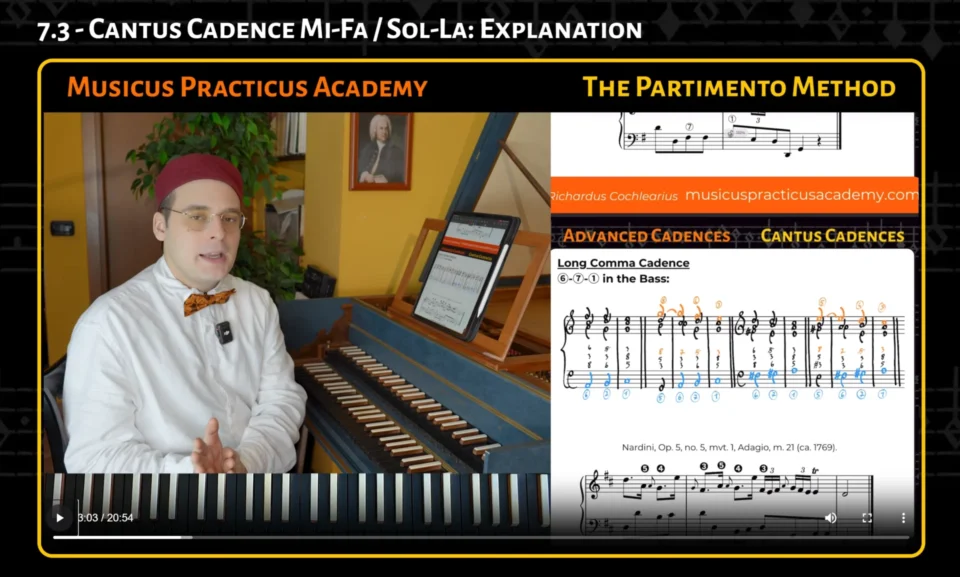
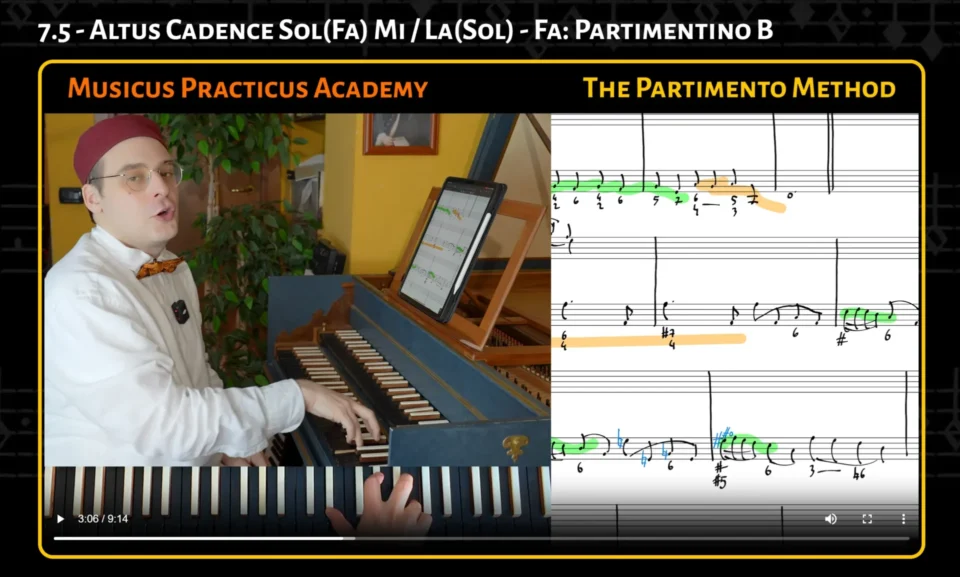
Chapter 8: 4 Part and Further Patterns
In every journey, you can always discover precious details and breathtaking vistas, only if you look around carefully.
Learn to use chromaticism, to add voices to the patterns you’ve already learned, and discover new ones to further enrich your compositions!
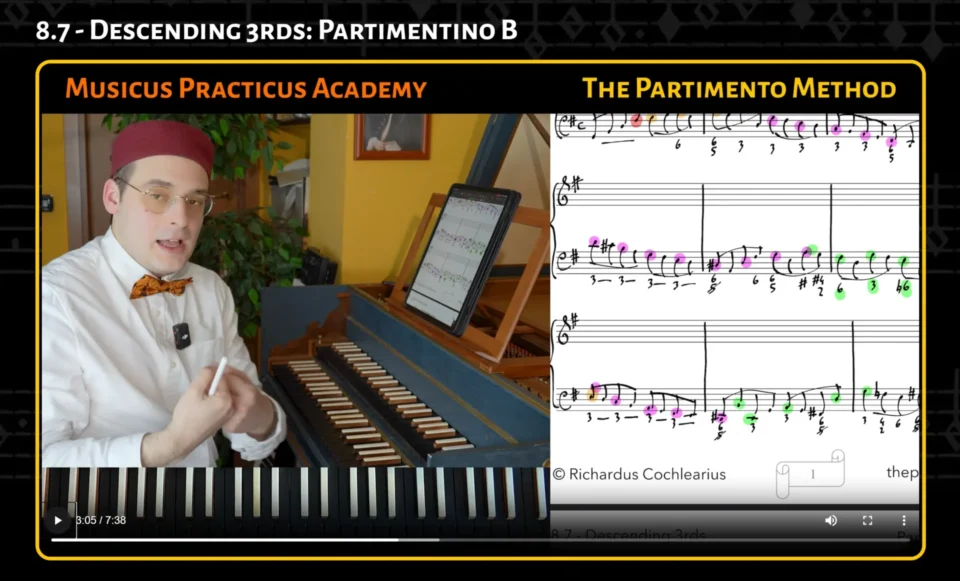
What you will Learn
🎼 Stage 8.1 – 4 Part Patterns
🎼 Stage 8.2 – Fauxbourdon
🎼 Stage 8.3 – Monte 5-6 and Fauxbourdon 76
🎼 Stage 8.4 – Quintfall Sequence
🎼 Stage 8.5 – Tied Bass
🎼 Stage 8.6 – 3rd down 2nd up
🎼 Stage 8.7 – Descending 3rds
🎼 Stage 8.8 – Chromatic Romanesca
🎼 Stage 8.9 – Lamento Bass
🎼 Stage 8.10 – Diminished 7th


Chapter 9: Suspensions and Double Suspensions
How to make a journey even more engaging? Add some activities!
Learn to apply suspensions and double suspensions to make your progressions more engaging.

What you will Learn
🎼 Stage 9.1 – Basso Continuo Figures
🎼 Stage 9.2 – Suspensions and DoubleSuspensions
🎼 Stage 9.3 – 4-3 Suspension
🎼 Stage 9.4 – 2-3 Suspension
🎼 Stage 9.5 – 7-6 Suspension
🎼 Stage 9.6 – 7-3 Suspension
🎼 Stage 9.7 – 9-8 Suspension
🎼 Stage 9.8 – Double Suspensions


Chapter 10: Modulations
To transition from one environment to another, you need to have good adaptability!
Learn techniques to modulate smoothly and fluently from one key to another!
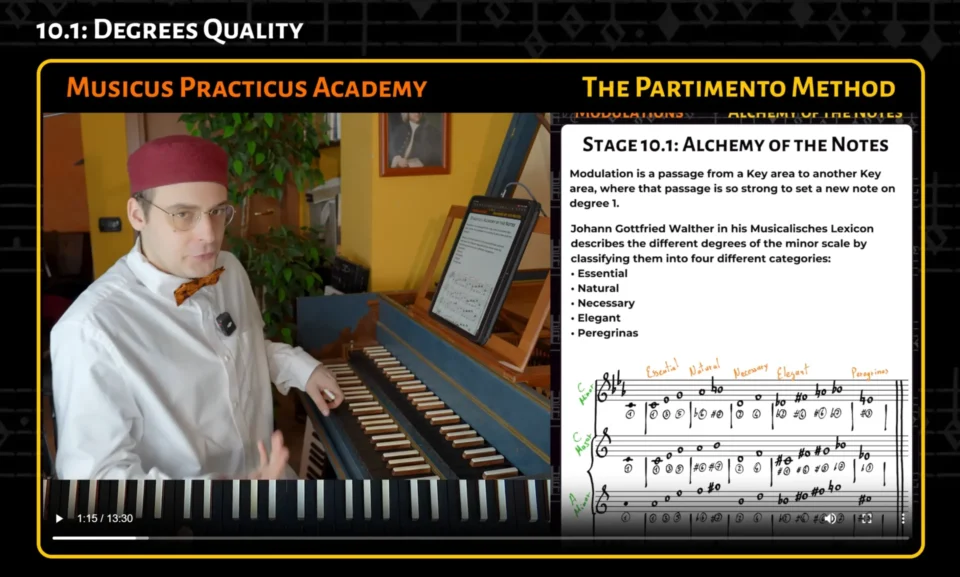
What you will Learn
🎼 Stage 10.1 – Modulation Theory
🎼 Stage 10.2 – From 1 to 5
🎼 Stage 10.3 – From 1 to 4
🎼 Stage 10.4 – From 1 to 6
🎼 Stage 10.5 – From 1 to 2
🎼 Stage 10.6 – From 1 to 3
🎼 Stage 10.7 – From 1 to 7

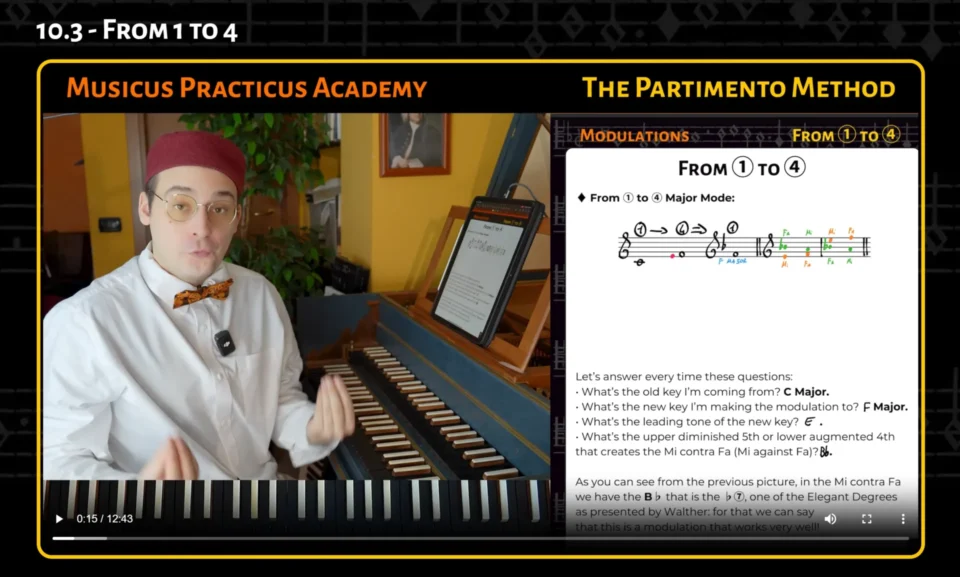
Chapter 11: Partimenti Numerati - Fenaroli's Books 1 and 2
Learn to create a Bass-line Partimento with a solid four-voice harmonization.
Apply consonances, dissonances, and everything you’ve learned!
Practice extensively with the Partimenti by Fedele Fenaroli!
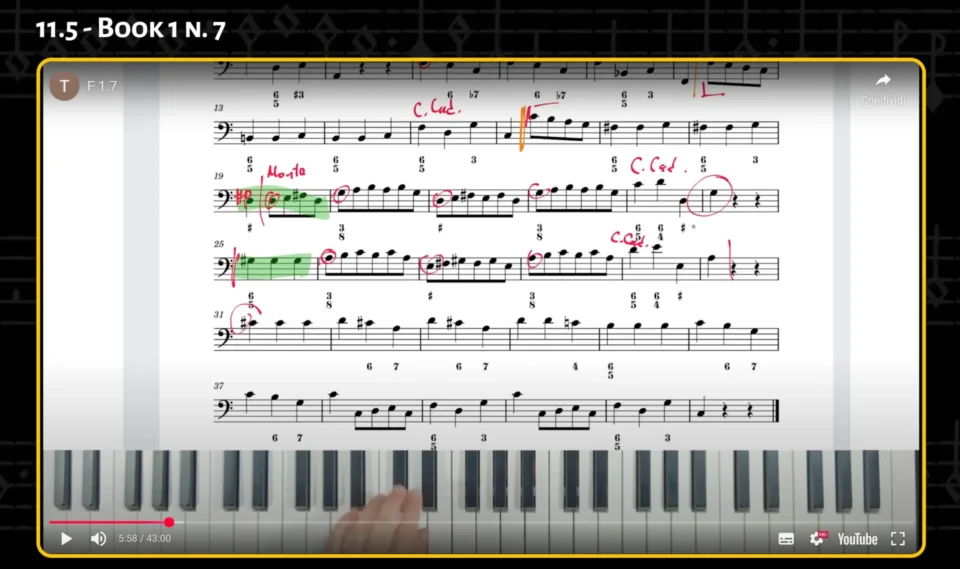
What you will Learn
🎼 Introduction to Fenaroli’s Partimenti Numerati
🎼 Fenaroli – Book 1 n. 1
🎼 Fenaroli – Book 1 n. 3
🎼 Fenaroli – Book 1 n. 4
🎼 Fenaroli – Book 1 n. 5
🎼 Fenaroli – Book 1 n. 7
🎼 Fenaroli – Book 1 n. 8
🎼 Fenaroli – Book 1 n. 11
🎼 Fenaroli – Book 1 n. 13
🎼 Fenaroli – Book 1 n. 15
🎼 Fenaroli – Book 2 n. 1
🎼 Fenaroli – Book 2 n. 2
🎼 Fenaroli – Book 2 n. 4
🎼 Fenaroli – Book 2 n. 6
🎼 Fenaroli – Book 2 n. 11
🎼 Fenaroli – Book 2 n. 12
🎼 Fenaroli – Book 2 n. 14
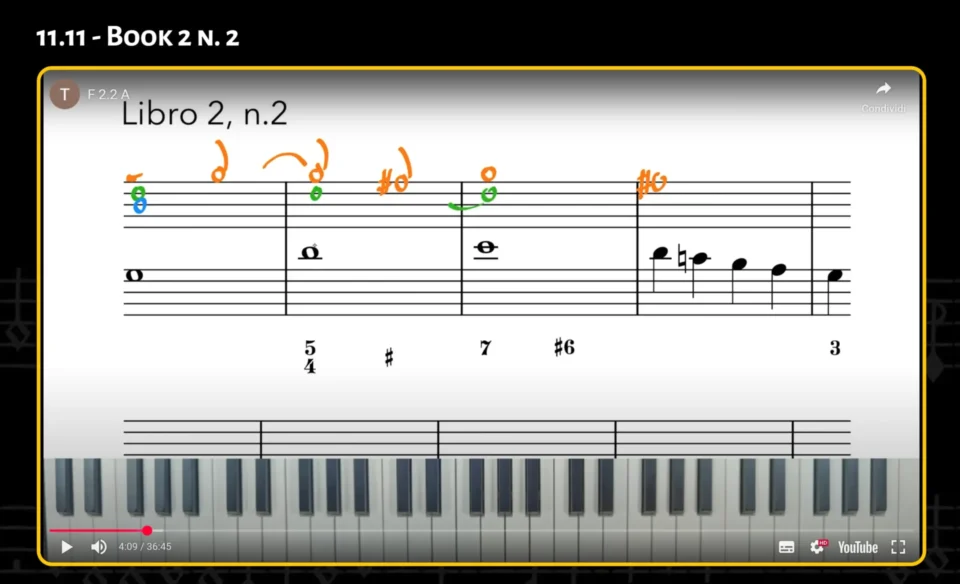
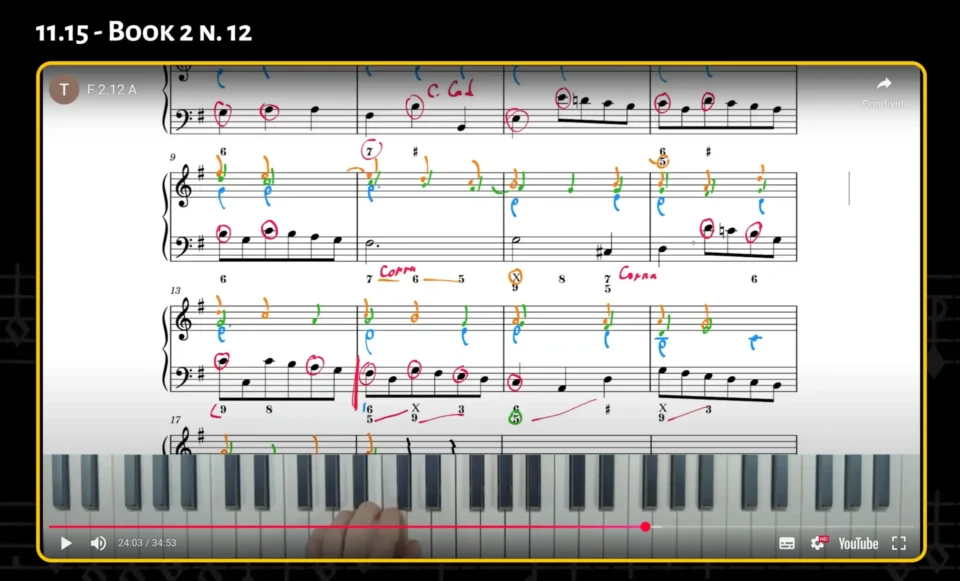
Chapter 12: Partimenti Diminuiti - Durante's Diminuiti
Reach the well-deserved destination!
Apply all the techniques you’ve learned on this journey to create complex compositions using Francesco Durante’s Diminished Partimenti!

What you will Learn
🎼 Introduction to Durante’s Partimenti Diminuiti
🎼 F. Durante – Partimento Diminuito n. 1
🎼 F. Durante – Partimento Diminuito n. 5
🎼 F. Durante – Partimento Diminuito n. 13
🎼 F. Durante – Partimento Diminuito n. 18
🎼 F. Durante – Partimento Diminuito n. 20
🎼 F. Durante – Partimento Diminuito n. 31
🎼 F. Durante – Partimento Diminuito n. 34
🎼 F. Durante – Partimento Diminuito n. 36
🎼 F. Durante – Partimento Diminuito n. 40
🎼 F. Durante – Partimento Diminuito n. 45
🎼 F. Durante – Partimento Diminuito n. 51
🎼 F. Durante – Partimento Diminuito n. 58
🎼 F. Durante – Partimento Diminuito n. 62
🎼 F. Durante – Partimento Diminuito n. 65
🎼 F. Durante – Partimento Diminuito n. 75
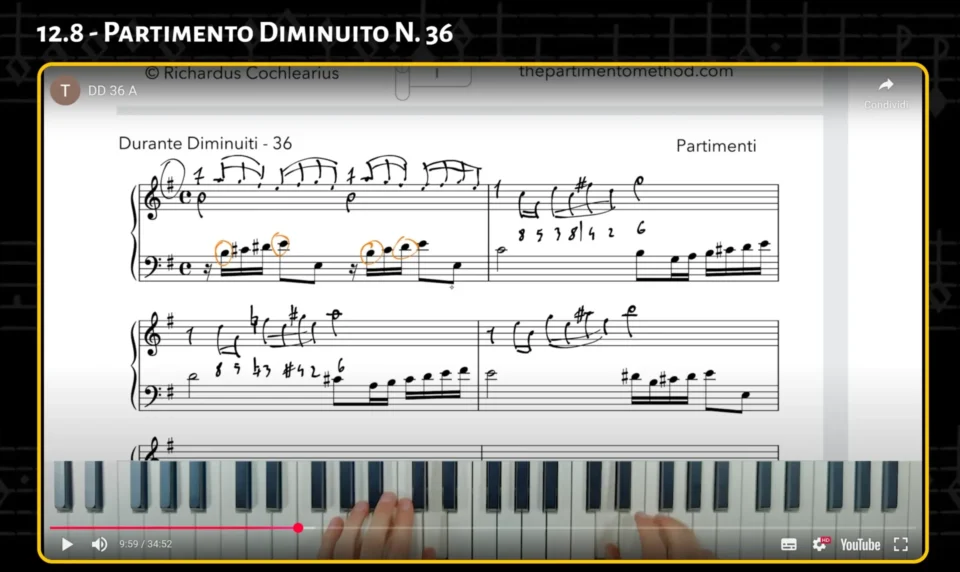
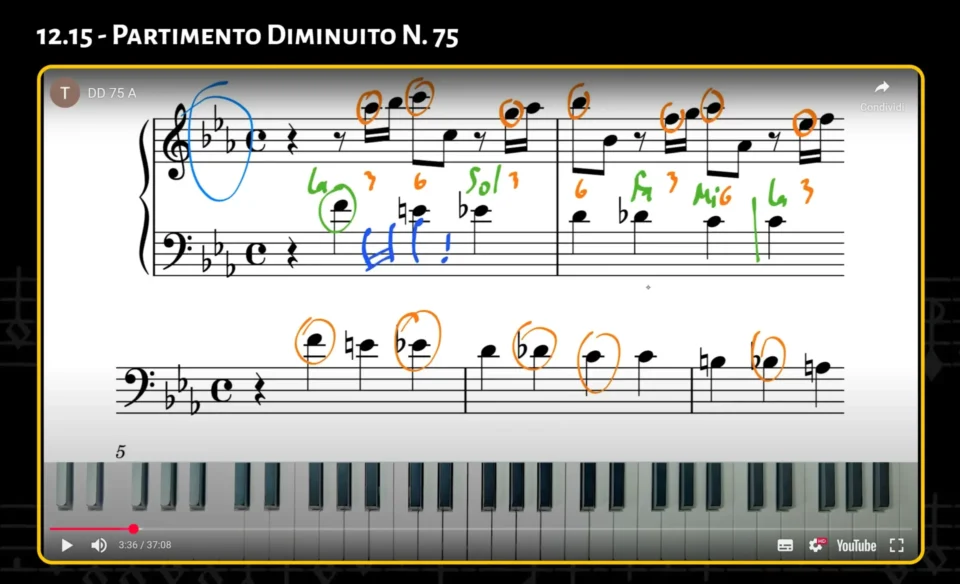
450+ Lessons
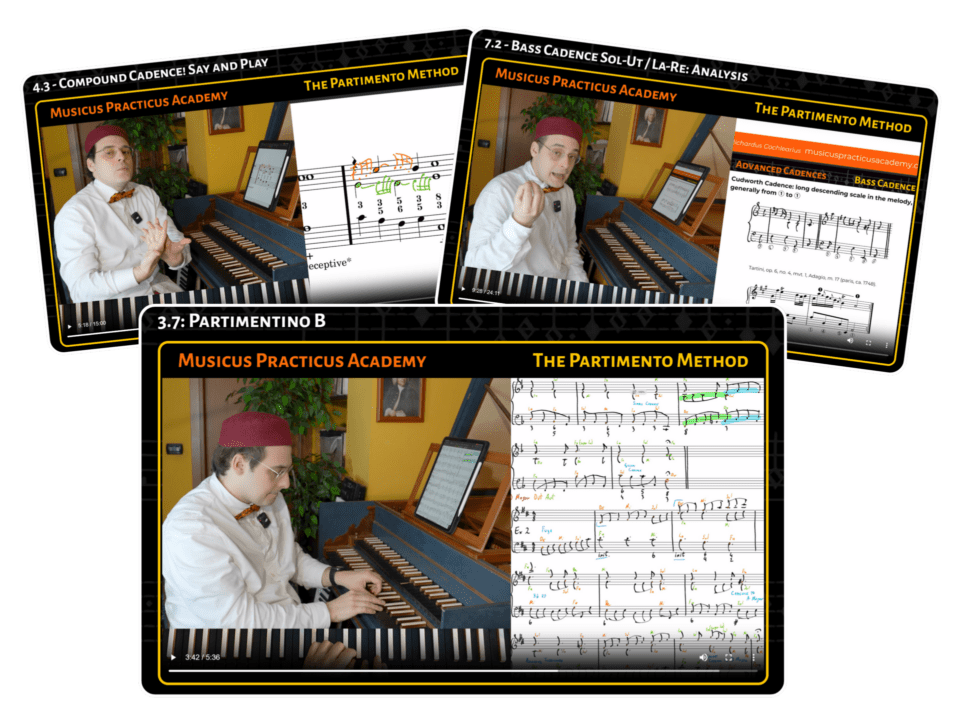
12 Levels, 130+ Stages, and 450+ Video Lessons that you can watch and study anytime you want, from the online platform.
2000+ Pages
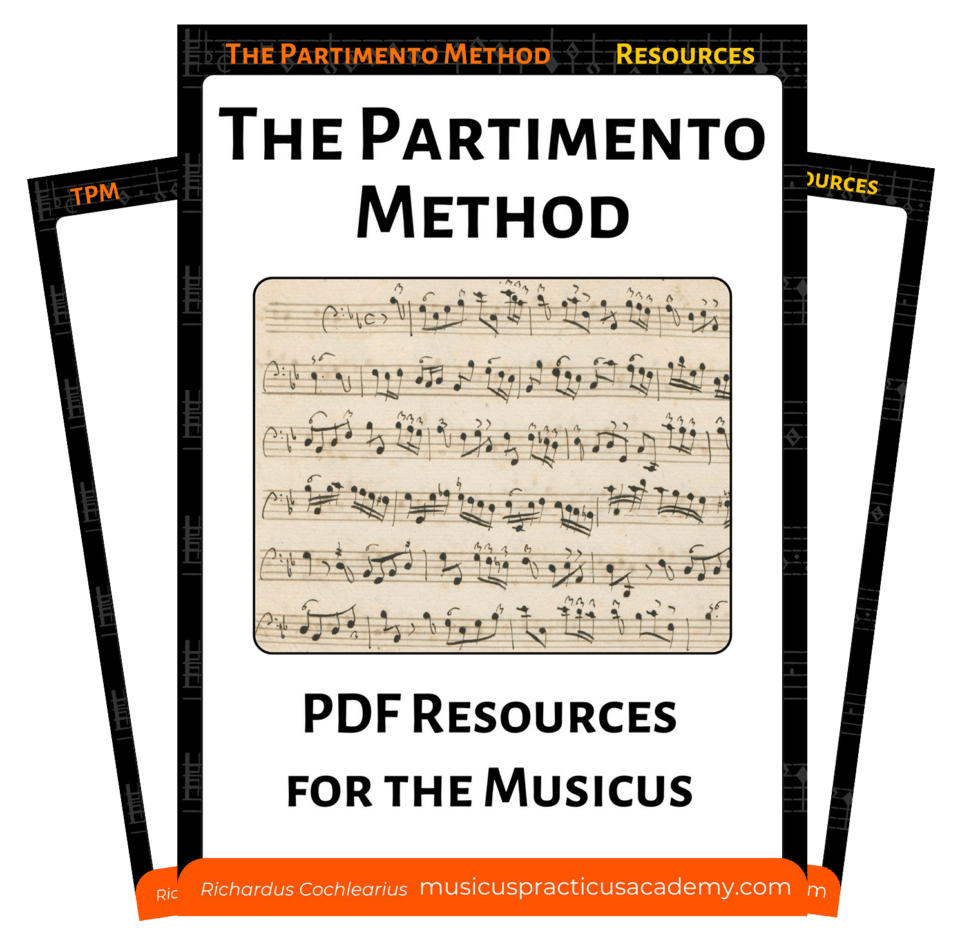
2000+ PDF pages of examples
exercises, and resources to follow the lessons, take notes, and do plenty of practice.
Questions

Comment under each stage to ask your questions and satisfy your curiosity as a Musicus Practicus.
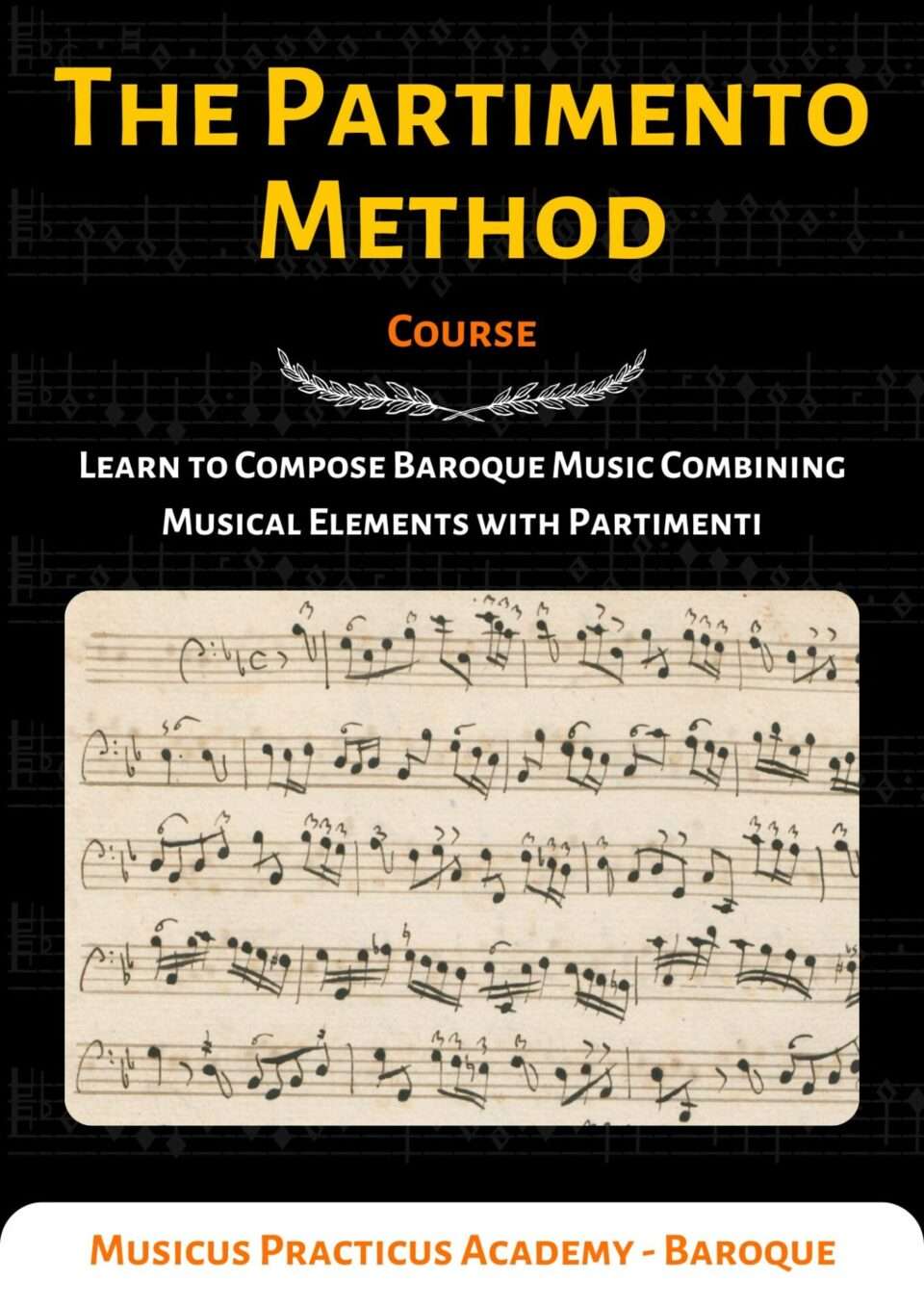
Learn More about
The Partimento Method!
Discover everything you will learn and preview some images we’ll use to learn together!

Filip, Musicus from Poland

Jacob, Musicus From Brooklyn

Julien, Musicus from France

